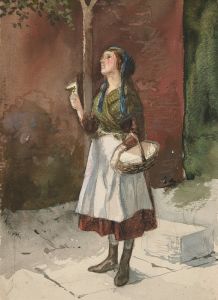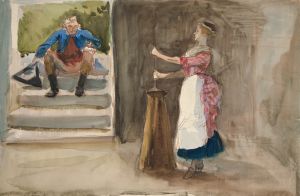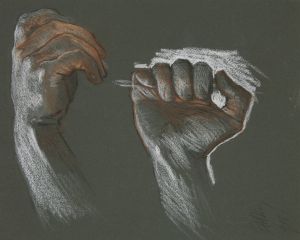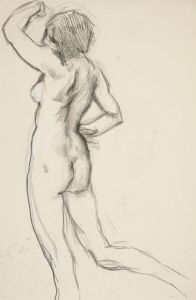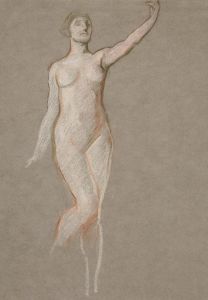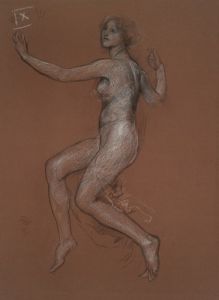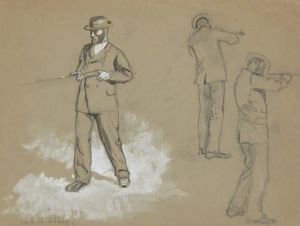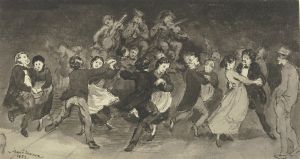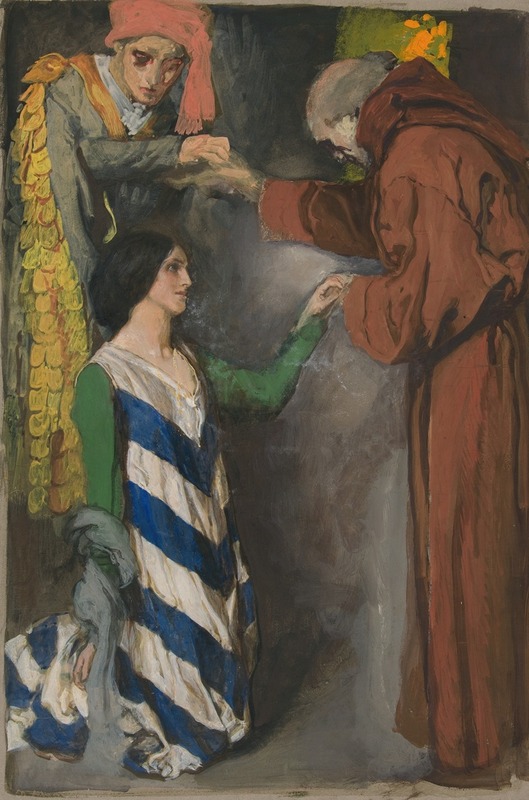
Till holy church incorporate two as one – Act II, Scene VI, Romeo and Juliet
A hand-painted replica of Edwin Austin Abbey’s masterpiece Till holy church incorporate two as one – Act II, Scene VI, Romeo and Juliet, meticulously crafted by professional artists to capture the true essence of the original. Each piece is created with museum-quality canvas and rare mineral pigments, carefully painted by experienced artists with delicate brushstrokes and rich, layered colors to perfectly recreate the texture of the original artwork. Unlike machine-printed reproductions, this hand-painted version brings the painting to life, infused with the artist’s emotions and skill in every stroke. Whether for personal collection or home decoration, it instantly elevates the artistic atmosphere of any space.
Edwin Austin Abbey's painting Till Holy Church Incorporate Two as One – Act II, Scene VI, Romeo and Juliet is a notable work inspired by William Shakespeare's tragedy Romeo and Juliet. Created in 1899, the artwork depicts the pivotal moment in Act II, Scene VI, where the young lovers, Romeo and Juliet, are secretly married by Friar Laurence. This scene is significant in the play as it symbolizes the union of the two protagonists despite the feud between their families, the Montagues and the Capulets.
Abbey, an American artist, was renowned for his detailed and historically informed illustrations and paintings, often drawing inspiration from literature, particularly Shakespeare. His work is characterized by its meticulous attention to period detail and dramatic composition. In this painting, Abbey captures the solemn and intimate atmosphere of the secret wedding ceremony. The figures of Romeo, Juliet, and Friar Laurence are central to the composition, with their gestures and expressions conveying the gravity and tenderness of the moment.
The painting reflects Abbey's deep interest in historical accuracy and his skill in rendering textures, fabrics, and architectural details. The setting, likely inspired by Abbey's studies of medieval and Renaissance art and architecture, evokes a sense of authenticity appropriate to the time period of the play. The use of light and shadow enhances the emotional intensity of the scene, drawing the viewer's attention to the central figures.
This work is part of Abbey's broader engagement with Shakespearean themes, which he explored extensively throughout his career. Abbey's Shakespearean paintings and illustrations were highly regarded during his lifetime, contributing to his reputation as a leading figure in the late 19th and early 20th-century art world. His ability to translate literary scenes into visual art made his works popular among audiences familiar with Shakespeare's plays.
The painting is housed in the Yale University Art Gallery in New Haven, Connecticut. It remains an important example of Abbey's contribution to the visual interpretation of Shakespeare's works and serves as a testament to the enduring appeal of Romeo and Juliet as a source of artistic inspiration.





